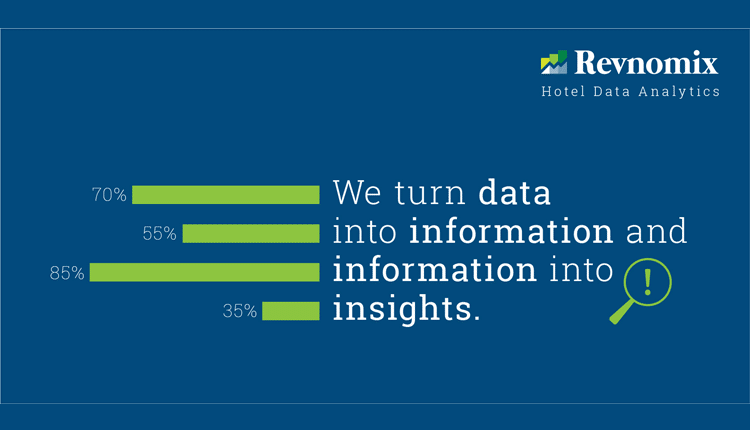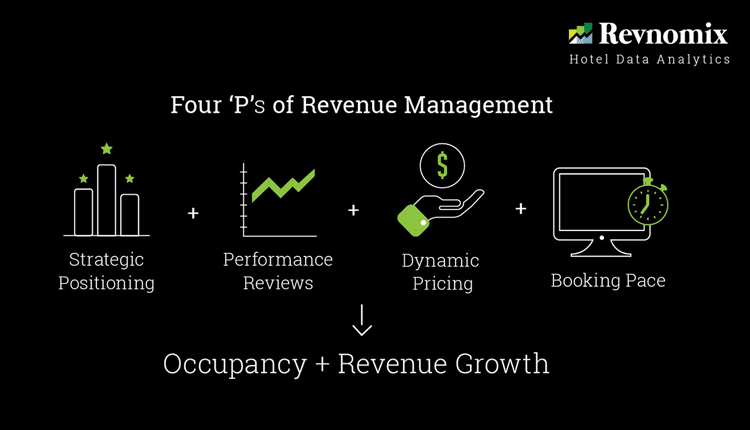Data Analytics in the Hotel industry is quiet complex generally, due to the nature of business model where bookings arrive through multiple Channels, multiple Feeder Markets, multiple Segments etc. Mostly booking windows across channels are open to accept bookings up to 365 days in future which makes pricing decisions for each day in future and especially for the far out dates can be a cumbersome task. Most of the hotels are able to overcome this issue simply by adopting flat rate strategy and price each future date at the same level.
This probably is the easiest strategy whereby a Hotel holds on to a particular rate upto a week out and changes the rates closer to the day of arrival based on the need. Most of the times the rates are dropped closer to the day of arrival. The questions is why Hotels drop rates closer? The answer is; they have simply not anticipated the demand well in advance and are now in distress to fill the leftover inventories. Following are some of the patterns that Hotel Commercial leaders should analyse on a regular basis and utilise the understanding to the betterment of future business.
Seasonality: Hotel must have a very clear understanding of the seasonality. In some markets the demand volume may remain the same across entire year yet the value (ADR) may differ drastically season by season. Hotels must benchmark minimum retail rates considering season and anticipated occupancy.
Day of week patterns: Each day of week witnesses distinct volume and value (ADR) patterns; hoteliers are expected to have clear understanding of the same. Each DOW should be priced as per the anticipated demand; Slow days should have low rates and fast moving day of weeks should have higher benchmark rates. One should also monitor pickup on an ongoing basis and change the pricing as per the need.
Booking Pace: Hotel should continuously monitor the change in the booking pace behaviour across all segments and holistically at the hotel level at the same time. Majority of hotels rely on last minute demand which may not be correct. The pricing tacticals should be utilised to create desired booking pace. Demand materialisation far out will help the revenue manager to price hotel confidently closer to the day of arrival and optimise the revenue.
Competitor Pricing trends: It would be really nice to have the understanding of competitors pricing behaviour. With daily competitor rate shopping data; one can build the competitors daily pricing trend and use this information to price hotel smartly as per the need.
Business Mix Analysis: Hotel has limited inventories to offer and sometimes the available demand is much higher than the hotel’s capacity. Hotel Managers should proactively identify these dates and ensure that hotel is filled with the most profitable businesses and avoid low rated bookings.
Geographic Origin of Business/ Feeder Market Analysis: Like each Market Segment, each feeder market has certain spending capacity, which ultimately decides the rates that can be yielded from those markets. Hotels must conduct regular analysis to identify the top feeder markets and Markets that are on decline. This will not only assist hotel to strategise better but will also yield better on an ongoing basis.
Daily Forecast: Hotels must work on daily forecasting models; when we anticipate demand it’s much easier to price. Daily demand anticipation and monitoring will help hotel to keep right balance of rates and volume.
Revnomix intends to provide the power of data analytics to Hotel/Asset owners. Revnomix designs, develops and service custom data analytics & Business Intelligence platforms/dashboards that will provide processed information right from Market Segment level to Hotel and up to Estate level with multiple properties consolidated on single platform.
Business Intelligence is a process to provide in depth clarity on Hotel Revenue Management Strategy and its impact on actual Revenue Performance. It utilises right Data Analytics and Technology to identify gaps in the historical performance and Future Pace / Pricing strategies. Data from multiple sources like PMS, CRS, RMS, Rate Shopping Tool, STR, etc, is consolidated on a single Platform to provide absolute clarity on Asset Pricing, Pace, Positioning and Performance.
The dashboard will cover incisive analytics across areas of Performance, Positioning, Pace and Pricing.
- > Create process to provide in depth clarity on Hotels Revenue Management Strategy and its impact on actual Revenue Performance.
- > Utilise right Data Analytics and Technology to identify gaps in the historical performance and Future Pace / Pricing strategies.
- > Provide absolute clarity on Asset Positioning among Compset vs. Pricing, utilising open source Reputation and Pricing Data.








